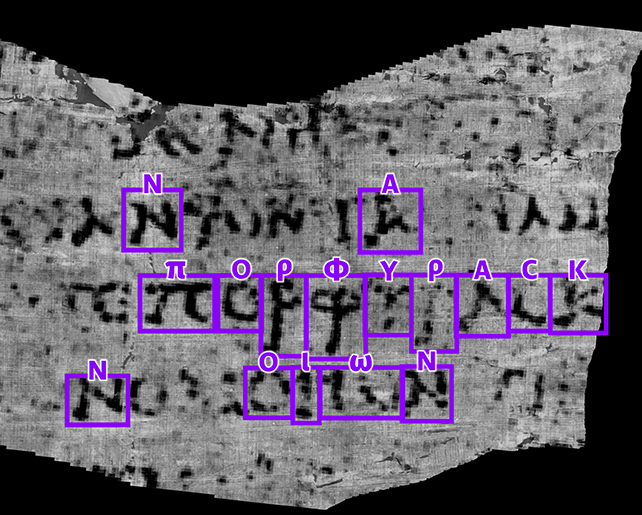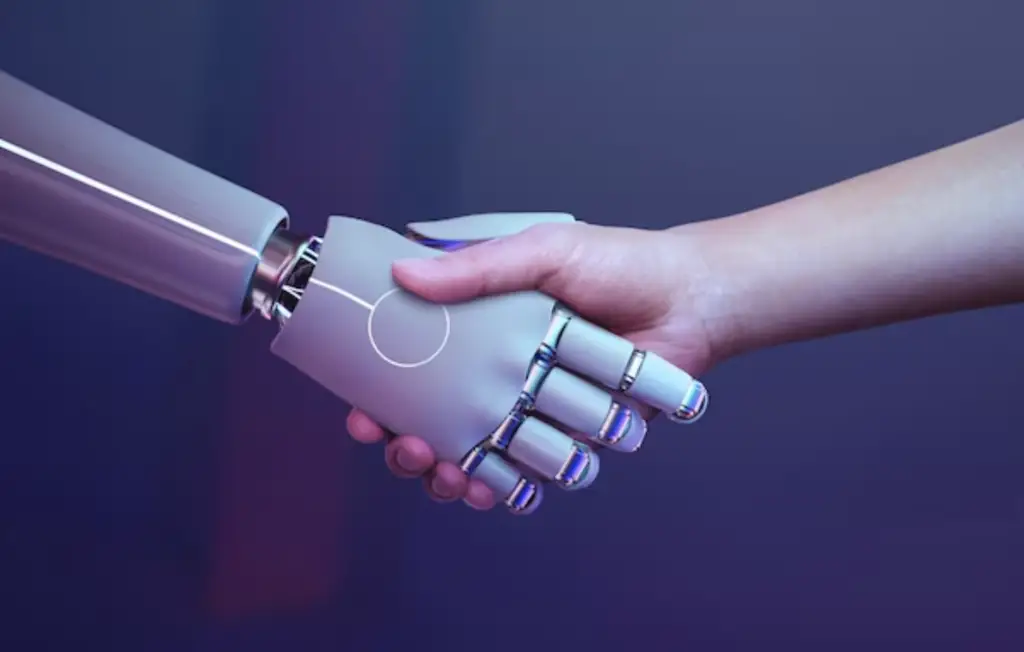Imagine a scroll cocooned in the embrace of Mount Vesuvius’ volcanic ash, untouched for nearly two millennia. It stands as a silent testament to the cataclysmic force that engulfed ancient civilizations. To decipher its enigmatic script might seem an insurmountable task, a puzzle frozen in time. Yet, a remarkable shift has occurred.
A fusion of technology and historical inquiry has birthed a new era of comprehension. With the aid of artificial intelligence (AI), the veils concealing these ancient scrolls are gradually parting.
This harmonious blend of technology and history is kindling a revival of scholarly exploration, promising the resurrection of forgotten wisdom from the depths of ancient Rome’s chronicles.

The Vesuvius Challenge of Crowdsourcing Decipherment
In March, the University of Kentucky launched the Vesuvius Challenge, an initiative that provided thousands of X-ray images of charred, carbonized Herculaneum scrolls to the public.
These images were accompanied by AI software capable of interpreting the scans. The hope was that by crowdsourcing the task of deciphering the scrolls, new insights could be gained into the ancient Roman city of Herculaneum.
Decoding “Porphyras”
Recently, the first prizes were awarded to two students who successfully decoded portions of the ancient scrolls. Luke Farritor, a computer science student at the University of Nebraska-Lincoln, and Youssef Nader, a biorobotics graduate student at the Free University of Berlin, independently identified the word “porphyras,” meaning “purple” using modern Greek characters.
This marks the first full word to be decoded from the scripts using AI software.
The Significance of “Purple” in Ancient Rome
The significance of the word “purple” in ancient Rome cannot be understated. It often represented wealth and status, indicating that it could refer to robes or rank. However, further analysis of the scrolls will be needed to confirm its exact meaning.
Approaches to Decoding
Farritor and Nader utilized different approaches to decode the ancient text. Farritor trained a machine learning model on the crackle pattern identified on the scroll, a pattern indicating a stroke of ink. As the AI discovered more crackles and ink strokes, its ability to detect patterns improved, eventually revealing the word “porphyras.”

Similarly, Nader employed a machine learning approach, training the AI to recognize shapes that resembled letters. By showing the AI what these patterns should look like, it learned to identify them in the images and uncovered the word “porphyras” along with some surrounding letters.
AI’s Ability to Detect Subtle Variations
These breakthroughs were made possible by the AI engines’ ability to detect subtle variations in texture in the X-ray images, revealing strokes of ink that are invisible to the human eye. Researchers are hopeful that further exploration of the scrolls will unveil even more valuable information.
The Vesuvius Challenge
Nestled amidst the picturesque Bay of Naples, where azure waters gently lap against rugged shores, lies the alluring enigma known as the Vesuvius Challenge. This extraordinary quest, shrouded in the mists of time, promises a staggering bounty of $700,000 to the intrepid soul capable of unraveling the mysteries concealed within four or more ancient scrolls.
At the heart of this enigmatic journey lies the Villa of Lucius Calpurnius Piso Caesoninus, a testament to a bygone era of opulence and refinement. Perched on the slopes of the formidable Mount Vesuvius, the villa commands a panoramic view of the Bay of Naples, an echo of the grandeur that once graced its halls.
Villa of Lucius Calpurnius Piso Caesoninus
Transporting us back to the annals of history, the villa’s origins trace back to the cusp of the 1st century BCE, an era marked by the resplendence and turmoil of ancient Rome. Lucius Calpurnius Piso Caesoninus, a figure of eminence and eloquence, held sway over the fertile expanse of Campania. His stature was further elevated by his matrimonial alliance with the illustrious Gaius Julius Caesar, cementing his position as a trusted stalwart within the inner circles of Roman power.

Yet, the hands of destiny wove a tragic tale in the year 79 CE, when Mount Vesuvius stirred from its slumber in a cataclysmic display of fury. Amidst the maelstrom of ash and molten earth, the Villa of Lucius Calpurnius Piso Caesoninus met its untimely end, entombed beneath layers of volcanic sediment.
For centuries, the villa’s secrets lay cloaked in the earth’s embrace, until the 18th century saw a twist of fate. As diligent laborers tilled the fertile soil of what was now a vineyard-draped landscape, the vestiges of this ancient estate were serendipitously unearthed. What emerged was a veritable treasure trove of antiquity – ornate frescoes depicting scenes of ancient life, statues hewn from the purest marble, and most significantly, the enigmatic scrolls.

Wrapped in layers of protective casing, these scrolls stand as silent sentinels of a bygone era. Their delicate surfaces bear witness to the craftsmanship of artisans long past, the inked script a testament to a time when knowledge was etched in sepia and black. The challenge laid forth is formidable, a test of intellect and linguistic finesse – to decipher four or more passages from these scrolls is to bridge the chasm between epochs.
As your fingers trace the delicate curves of the aged parchment, you become a part of an ancient narrative, a seeker of forgotten wisdom. The scrolls, preserved through centuries of volcanic slumber, whisper secrets of emperors and poets, of a world that once thrived in the shadow of Vesuvius.
And so, the Vesuvius Challenge beckons, an invitation to step beyond the boundaries of time and immerse oneself in the rich tapestry of antiquity. Within the Villa of Lucius Calpurnius Piso Caesoninus, beneath the vigilant gaze of Mount Vesuvius, lies a treasure trove of knowledge waiting to be unearthed. Are you prepared to embark on this odyssey, to decipher the riddles of an ancient world and claim the grand prize that awaits the triumphant victor? The scrolls await your touch, and the challenge awaits your intellect.
Preservation Challenges and Historical Significance
Unfortunately, very few ancient texts have survived to the present day. Most were lost to the passage of time or deliberate destruction. Therefore, any opportunity to decipher these scrolls without opening them, which would likely cause them to crumble to dust, holds immense value. It could unlock a wealth of information about life and learning in the first century.
Unraveling the Past with AI
The use of artificial intelligence in decrypting ancient Roman scrolls is an extraordinary development in the field of historical research. By leveraging AI’s ability to detect patterns and variations in the X-ray images, scholars have made significant progress in deciphering the secrets hidden within these ancient texts.
Future Prospects in Historical AI Research

The Vesuvius Challenge has not only engaged the public in the quest to unravel history but has also demonstrated the potential of AI in transforming our understanding of the past. With further advancements in AI technology and the continued collaboration between researchers and machine learning experts, we can hope to unravel even more mysteries from the annals of ancient civilizations.

This Site Was Inspired By An Interest in Protecting the Environment:
We had the privilege and joy of learning from Dr. Charlie Stine who instilled a love for the natural world through incredible field trips with the Johns Hopkins Odyssey Certificate program in Environmental Studies. At the time, the program was endorsed by the Maryland Department of Natural Resources. Sadly, after Dr. Stine retired, the program was phased out. We hope that we honor his legacy by shining a bright light on environmental issues and sharing good news about the success of various conservation programs when possible.

